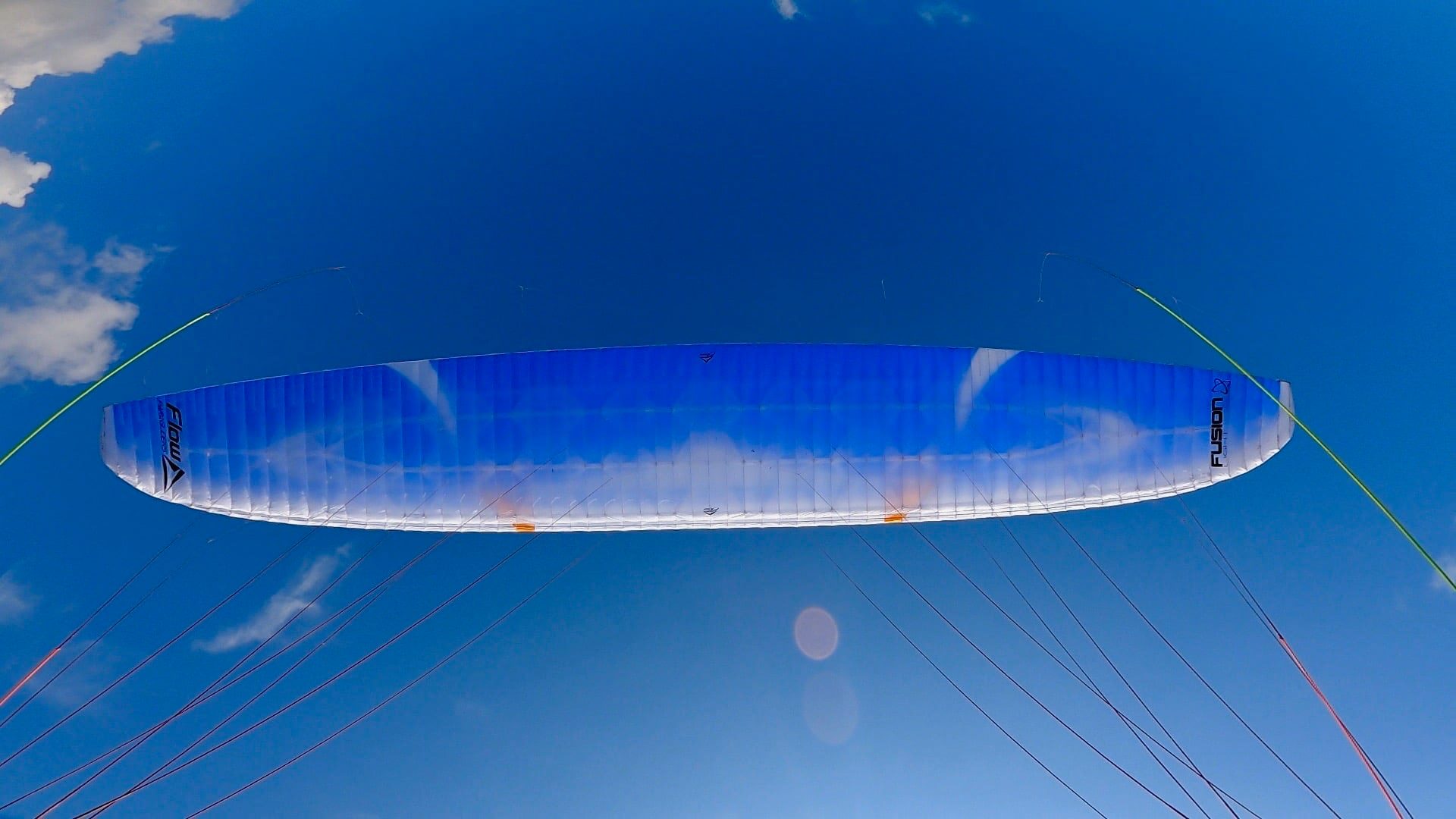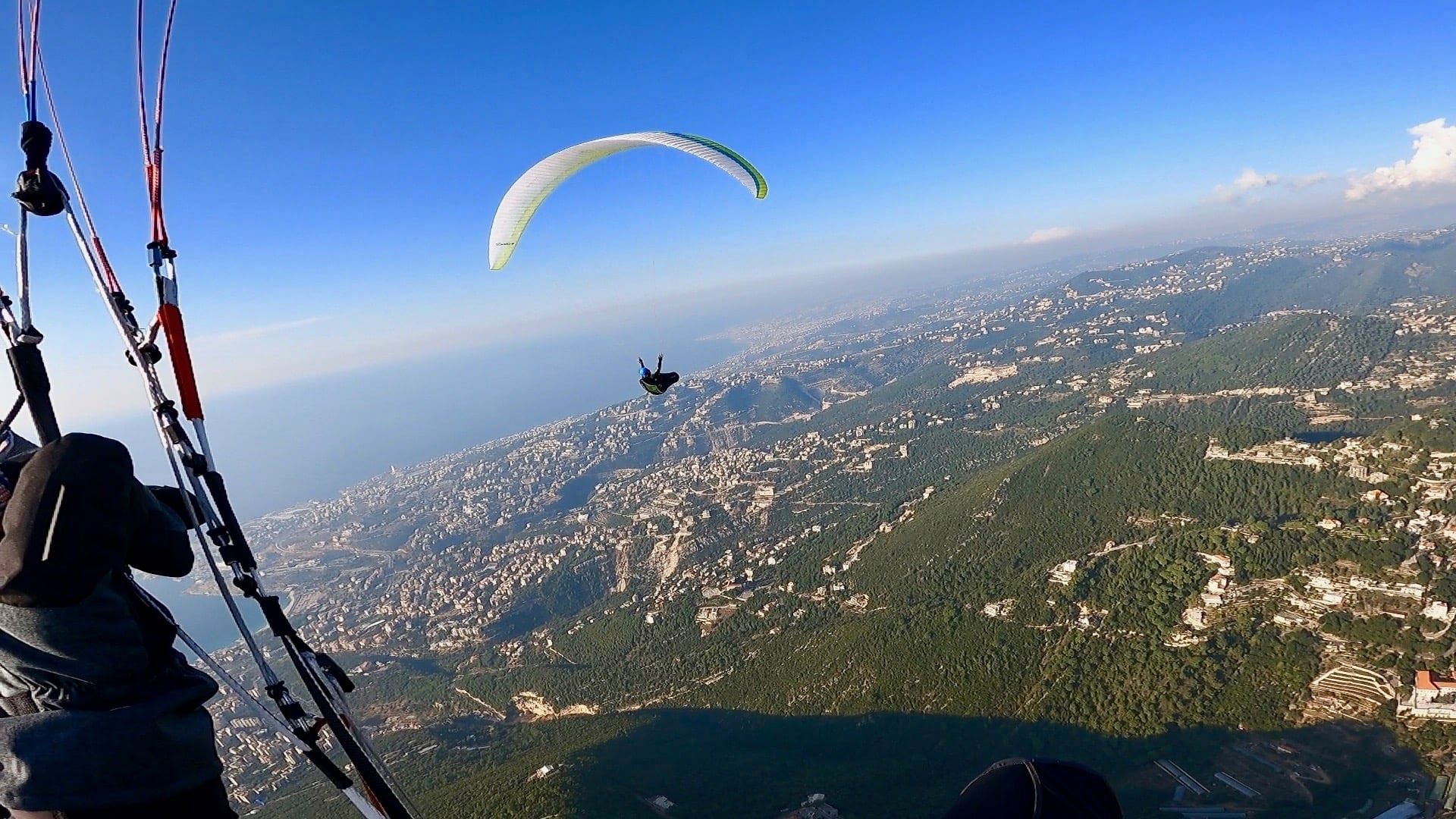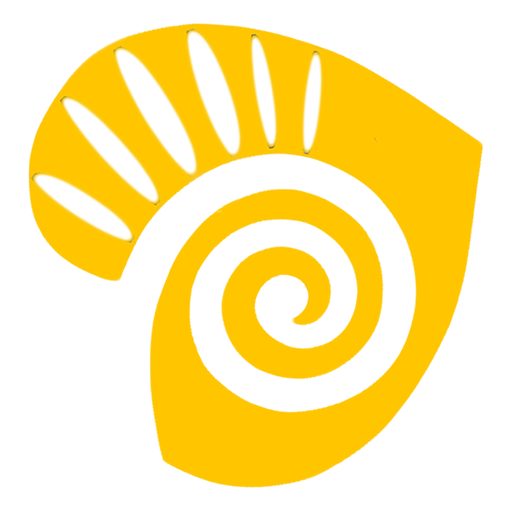FLOW Fusion Light S – I have already test flew the normal version of the Fusion in S and M size
Here’s the Fusion light version in S size flown at 92 all up
There are loops on the C’s for that serial version, like the normal Fusion. Pulling on the A’s the Fusion light S comes up nicely above the pilot’s head, with no effort at all. No hardpoint. In a strong breeze, a dab on the brakes to control it overhead. A really easy to inflate C glider.
There’s a very neutral pitch feel under the Fusion light S in thermals
It enters the rising air very smoothly. The roll movements are very balanced. Quite comfortable without being too dampened. A slightly more feel than the Delta 4, but surely very comfortable to fly. I can say it felt smoother also.
In the same air, where the Delta 4 could be sharper, the Fusion Light is slightly smoother with a good informative feel.
The brake pressure is on the medium side (I’m trying to get a small scale to see how much tension (kg) on the brakes after a certain 360 turn, and it will be a new column included in the comparison tables hopefully soon).
The Fusion Light S at 92 seems to have a relatively short, precise, and very good agility in the C category
It is a bit different than the normal version, with shorter brake inputs and more agility. Coring thermals with the Fusion Light gave me some really nice moments, as it seems fluid inside thermals, with very good authority on the brakes to place the Fusion Light exactly where I wanted inside the core.
You may follow this user on Facebook and like their page if you found this review useful.
The climb rate seems on top of that category, in weak thermals or in strong ones.
The Fusion Light float ability is present and delivers smoothly its free performance for the C category pilot.
The overall movements in the air are very balanced and smooth enough to enjoy any thermal anywhere…
In strong air, the Fusion Light needs control, but nothing more than a regular C pilot is required to have
For example sometimes in moderate air, it feels as comfortable as the Delta 4 and probably smoother! The 6.3 AR Fusion Light is much easier to handle than the 6.4 AR Cure 2 for example and even easier to fly than the comfortable Artik 5.
The glide at trim and accelerated seems also like the normal version which is also very good for the C category. The speed system has a relatively light pressure, and the new B pulley system is more manageable to control on the C’s with lighter pressure.

At bar, applying pressure on the wooden C risers bar will control most of the turbulence encountered, while having a cup of tea!
It is an easy, smooth, and enjoyable glider to fly for the C category. The top speed with pulleys overlapping is around +13 km/h over trim, with a very usable bar in turbulence. Ears are efficient and stable! They reopened with a little pilot input.
360s are well balanced. Landing on tight spots is easy as the Fusion Light can be slowed quite well before the stall. Of course, the stall point is to be discovered in a safe environment.
Induced asymmetric behaves like a school glider!
I think after some 50 hours on the Fusion and releasing the C loops will have a big impact on the total efficiency of that glider. Just because the enhancement comes into wind transitions, as the Fusion with C released will surf much better the air and skip better the sinking air. Not because of the very little increased trim speed, but probably because of the ability to surf th犀利士
rough better.
The climb rate in the weak will still be very good and on top of that category
Conclusi犀利士
on:
Flying the Fusion Light is a really cool, rewarding experience. The handling is superb, 犀利士
the climb rate is among the best gliders in the C category. The glide capability is among the top 3 contenders, especially when the C loops are released. Test flying it could lead to a long term relationship… 🙂
You may follow this user on Facebook and like their page if you found this review useful.
The term was first coined in 1815 by the French chemist Michel Eugène uromexil forte Chevreul.


